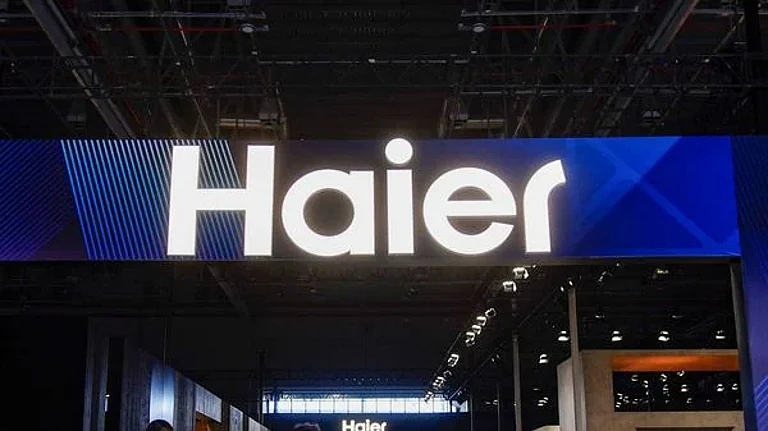Bengaluru-based Tresa George, 25, is new to the world of internet shopping. After her first online purchase in December, she now shops online for almost everything except groceries. George, who works at Goldman Sachs, says she has no time to shop and online stores help her buy things she wants at the click of a mouse. “It’s so convenient,” she says. “I get the product in a week and if I don’t like it, the delivery man comes back to pick it up, so I can return it.”
Thousands of others like George have taken to online shopping like never before. It’s difficult to resist online stores like Myntra, Fashionandyou and 99labels, which offer more products and better prices than neighbourhood stores. And consumer appetite for online shopping is so strong that there are nearly 200 online stores now.
Online retailing kicked off in a big way with the launch of websites like Flipkart and Myntra in 2007. Myntra was launched in the personal products space and then repositioned as a lifestyle and fashion retailer in late 2010. Some of these companies expect to turn profitable this year — Myntra and Fashionandyou say it will happen by December and, in keeping with the industry trend, online retailers who have launched in the last six months or so say break even will take three or four years.
Industry body Assocham says the online retail market will grow to ₹7,000 crore by 2015 from ₹2,000 crore now, backed by the easy availability of broadband services and increasing internet penetration across the country. The figure looks quite plausible considering the 15-20% month-on-month growth seen by most online retail sites. Some like Zivame (an online lingerie store), which started operations six months back, is seeing 100% month-on-month growth in sales. “I am quite surprised at our growth,” says Richa Kar, CEO. “We get most of our orders from small cities and towns such as Girudi in Bihar, Padra in Gujarat and Kanchipuram in Tamil Nadu. We see this as an achievement.”
Tiered story
It’s not just Zivame. The entire e-commerce industry is getting its maximum growth from tier 2 and 3 cities. While buyers in tier 1 cities shop online for convenience, shoppers in lower-tier cities turn to online stores because their preferred brands don’t have a retail presence in their town, or don’t stock the products they want.
Vijay Gumani, who runs a chain of baby products stores in Bengaluru called Appleofmyi, says constant enquiries from people in smaller towns led to the store going online as Hoopos. Currently, Hoopos services 2,400 pincodes, including interior locations in the North East.
In a sense, online stores have become a proxy for brick and mortar stores, filling in the gap created by the low penetration of brands in India. The country’s online retail growth story is quite different from that of the West, where the physical retail network was established first, after which sales shifted away from stores to online retailers. “In India, it’s the reverse. Online retailing is growing before we can see growth in brick and mortar stores,” says Gumani.
Organised retail is just 4-5% of the $550-billion Indian retail market and a small percentage of that is present in lower tier cities. “Brand penetration is low in India because the economics don’t work for retailers to put up a store in a city where only a few customers may want to buy their products. For such customers, the only access to merchandise is through online stores,” says Arvind Singhal, chairman of retail consultancy Technopak Advisors. Mukesh Bansal, CEO, Myntra, says 50% of the 10,000 orders his site gets in a day come from lower tier cities. “The online medium gives big brands a platform to reach out to buyers in smaller cities.”
Going cheap
Another key driver for online sales is the heavy discount offered by cyber retailers. Flash sale sites such as Fashionandyou and 99labels offer steeply discounted products for a limited time, working like the online version of factory outlets. A sale starts at a specific hour for a limited time and the inventory put up usually sells out within an hour.
“The lifestyle industry produces 30-40% excess stuff every quarter,” says Harish Bahl, founder and chairman, Fashionandyou, which gets about 10,000 orders a day. The online store offers brands a platform to liquidate their inventory and, in turn, gets deep discounts.
Ishita Swarup, CEO of 99labels, says discounts for a limited period of time create a sense of urgency among buyers. “The feeling that they might miss the sale generates interest,” she says. The site sells about 300 domestic brands, besides brands from Europe and the US.
Fashionandyou’s Bahl says his model is sustainable because it’s the only retailer to have a third of its merchandise change every day. A sale lasts for only three days on Bahl’s portal, which means everyday 33% of the goods on the site are fresh stuff. His company works with 800-1,000 merchants, so sourcing products is not a problem. “Even if we have 10-12 discount sales every day, a brand will repeat itself only every three months,” says Bahl. The repeat presence is sure because brands do end up with excess stock every quarter.
Beside, online stores can offer huge discounts since they don’t have to pay for real estate, which forms 35-40% of total costs for a retail store. Of course, the sites still have to incur expenses on technology, warehousing, logistics and marketing.
But not all sites follow the flash sale model. Myntra sells products at the maximum retail price (MRP). Myntra’s Bansal says discount sales may happen in the future but they will be a small portion of the pie at Myntra. “To scale up and sustain the business, discount retailers will have to morph into an MRP model,” he adds.
Technopak’s Singhal feels there is enough space for all kinds of online stores. He notes, “Growth in India will be much quicker than in the US because there are still many products that are not sold online.”
Take my money
Naturally, venture capital and private equity players are sensing a serious business opportunity in the online retail space. PE firms have already invested in close to half a dozen online retailers. Some examples: Accel India, Tiger Capital and IDG Ventures have invested $38 million in Myntra; Norwest Venture Partners, Intel Capital, Sequoia Capital and Nokia Growth Partners have invested $40 million in Fashionandyou; and 99labels has raised $3.5 million from Infoedge. “In the West, e-commerce is a three-decade old industry, whereas in India it has just started growing,” says Mukul Singhal, vice president, Saif Partners. Hoping to replicate the success it had with its investment in Vancle, an online apparel store in China, Saif has invested $6 million in Zovi, $10 million in FirstCry and $5 million in InkFruit. The fund also has investments in sites like MakeMyTrip and JustDial.
Prashanth Prakash, partner, Accel India, a US-based VC fund with investments in Flipkart, LetsBuy and Myntra, says investors have always been looking for digital businesses that can achieve a reasonable scale. He adds, “Ad-driven businesses have not grown much. They are concentrated between Google and Facebook, whereas e-commerce companies such as Flipkart or Myntra have shown reasonable scale.” Prakash should know for Myntra is already targeting a revenue of Rs 500 crore in FY13.
Going ahead, experts feel consolidation in the e-commerce space is inevitable. Notwithstanding the mushrooming of online retailers, only a few sites will survive over the next five years and their success will depend on their business proposition and financial strength.
“In the next nine months, you will witness consolidation,” says Singhal, who sees companies that are not able to raise capital shutting down and small niche players being bought over. Consolidation has already started with Flipkart acquiring its smaller rival, LetsBuy. “Early stage investors will experiment with consolidation and, in the case of LetsBuy, there was synergy because both retailers sell electronic items,” says Prakash.
SAIF’s Singhal believes that consolidation in the online retail space will be similar to what happened with online travel portals that shrunk to just three market leaders from around 10-15 portals in the past.
The survival of online stores will depend on a combination of brand building, execution, technology and logistics. Remember, e-commerce, though not in its infancy stage, is still a very new industry. The game has not played out yet.











